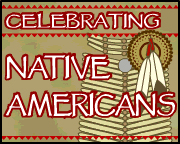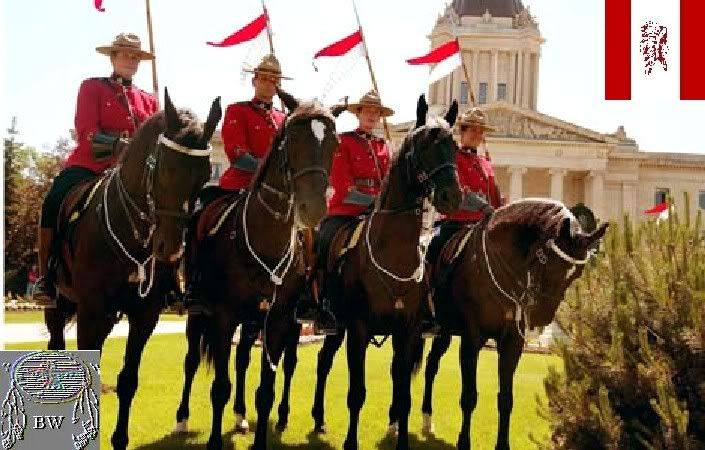|
BRAVEHORSE WARRIOR Hwistesmetxoqen
Okanagan Warrior

 Chief Walking Grizzly Bear
Warrior Citation
HWISTESMETXOQEN (meaning “walking grizzly bear”; also known as Shiwelean, Nicola, N’Kuala, and various spellings
of Nicholas), head chief of the Okanagans; fl. 1793–1859. Much of what is known about Hwistesmetxoqen, who was called
Nicola by the early fur traders, comes from the folklore and oral history of the Okanagans, one of the Interior Salish people
of present-day British Columbia. These legendary accounts, which preserve the Okanagan toponymy and appellation, have been
collected by anthropologists and local historians and despite their lack of precision present a remarkably consistent portrait
of the major events that marked his life. Nicola was descended from a long line of Okanagan head chiefs and, according to
legend, was born at the fortified encampment established by his father, Pelkamū'lôx (which means “rolls over the
earth”), near the junction of the Similkameen and Okanagan rivers (Wash.). When Nicola was still a young boy PElkamū’lôx
took his people north to Fish Lake (B.C.), where he settled near the band of his brother Kwoli'la at Chapperon Lake. PElkamū’lôx
at times went to the plains through the Flathead country to hunt buffalo and the legends speak of his meeting two North West
Company traders, Finan McDonald and a certain Lagacé, at Hell’s Gate Pass (near Helena, Mont.). This meeting would have
been some time after 1807, the year McDonald arrived in the Columbia region with David Thompson. For the Okanagans the meeting
was their first contact with whites, and PElkamū’lôx , known as a great orator, returned to his country to recount
the story of men with white skins and blue eyes, of sticks that made thunder, smoke, and fire and that could kill birds in
flight, and of an animal, the horse, that could run faster than the buffalo. At one of the feasts called to hear these tales
a Lillooet chief declared that such things could not exist and that PElkamū’lôx was a liar. The head chief rose
to defend his honour but was struck down by two arrows fired by his accuser. Before he died, PElkamū’lôx made his
son Nicola head chief and confided him to the care of Kwol§'la, exhorting the young boy to avenge his death. The exact date
of PElkamū’lôx’s death is not known. It would appear, however, that when the first party from the newly established
Pacific Fur Company, led by David Stuart, arrived in the Okanagan during the winter of 1811–12, it found Nicola as head
chief. Ovide Montigny, a member of the party, apparently met Nicola at the head of Okanagan Lake and, after a successful winter’s
trading, returned to the PFC’s headquarters at Fort Astoria (Astoria, Oreg.), leaving the head chief to watch over the
goods he was not taking with him. The legend tells how the young chief was rewarded by Montigny upon the latter’s return
the following autumn with a gift of ten guns, ammunition, some tobacco, and other goods. Reminded of his duty to avenge the
murder of his father, he is said to have organized a party of some five hundred warriors from the Okanagan, Thompson, Shuswap,
and Similkameen tribes, and to have attacked the Lillooet in their fishing territory on the Fraser River, killing three or
four hundred of their people. But there is another source that has to be taken into account in trying to work out the events
of Nicola’s life. The journal of the Thompson’s River Post (Kamloops, B.C.) for November 1822, kept by John McLeod,
relates the murder of a leading Native American, supposedly PElkamū’lôx , who “was killed by the Fraser’s
River Native Americans and suffered a most cruel Torture by being left to linger for some days after his bowels were ripped
open.” In January 1823 McLeod mentions Nicola’s plans to “revenge his Father’s Death.” During
the early fur trade era in New Caledonia (B.C.), Nicola’s influence was much appreciated by the traders of the NWC and
the Hudson’s Bay Company, and his generous welcome was largely responsible for the happy relationship between them and
the Interior Salish people. In the late 1830s Chief Factor Samuel Black, in charge at Thompson’s River Post, lent him
a plough so that he could grow potatoes and other vegetables at his summer camp on Nicola Lake; this first local effort at
cultivation was soon imitated by other bands. Following the murder of Black by a young Shuswap warrior in 1841, Nicola calmed
the HBC men, who feared a widespread uprising, by delivering a moving eulogy, reported by Archibald McKinlay, which called
for the capture of the killer.
Chief Walking Grizzly Bear
Warrior Citation
HWISTESMETXOQEN (meaning “walking grizzly bear”; also known as Shiwelean, Nicola, N’Kuala, and various spellings
of Nicholas), head chief of the Okanagans; fl. 1793–1859. Much of what is known about Hwistesmetxoqen, who was called
Nicola by the early fur traders, comes from the folklore and oral history of the Okanagans, one of the Interior Salish people
of present-day British Columbia. These legendary accounts, which preserve the Okanagan toponymy and appellation, have been
collected by anthropologists and local historians and despite their lack of precision present a remarkably consistent portrait
of the major events that marked his life. Nicola was descended from a long line of Okanagan head chiefs and, according to
legend, was born at the fortified encampment established by his father, Pelkamū'lôx (which means “rolls over the
earth”), near the junction of the Similkameen and Okanagan rivers (Wash.). When Nicola was still a young boy PElkamū’lôx
took his people north to Fish Lake (B.C.), where he settled near the band of his brother Kwoli'la at Chapperon Lake. PElkamū’lôx
at times went to the plains through the Flathead country to hunt buffalo and the legends speak of his meeting two North West
Company traders, Finan McDonald and a certain Lagacé, at Hell’s Gate Pass (near Helena, Mont.). This meeting would have
been some time after 1807, the year McDonald arrived in the Columbia region with David Thompson. For the Okanagans the meeting
was their first contact with whites, and PElkamū’lôx , known as a great orator, returned to his country to recount
the story of men with white skins and blue eyes, of sticks that made thunder, smoke, and fire and that could kill birds in
flight, and of an animal, the horse, that could run faster than the buffalo. At one of the feasts called to hear these tales
a Lillooet chief declared that such things could not exist and that PElkamū’lôx was a liar. The head chief rose
to defend his honour but was struck down by two arrows fired by his accuser. Before he died, PElkamū’lôx made his
son Nicola head chief and confided him to the care of Kwol§'la, exhorting the young boy to avenge his death. The exact date
of PElkamū’lôx’s death is not known. It would appear, however, that when the first party from the newly established
Pacific Fur Company, led by David Stuart, arrived in the Okanagan during the winter of 1811–12, it found Nicola as head
chief. Ovide Montigny, a member of the party, apparently met Nicola at the head of Okanagan Lake and, after a successful winter’s
trading, returned to the PFC’s headquarters at Fort Astoria (Astoria, Oreg.), leaving the head chief to watch over the
goods he was not taking with him. The legend tells how the young chief was rewarded by Montigny upon the latter’s return
the following autumn with a gift of ten guns, ammunition, some tobacco, and other goods. Reminded of his duty to avenge the
murder of his father, he is said to have organized a party of some five hundred warriors from the Okanagan, Thompson, Shuswap,
and Similkameen tribes, and to have attacked the Lillooet in their fishing territory on the Fraser River, killing three or
four hundred of their people. But there is another source that has to be taken into account in trying to work out the events
of Nicola’s life. The journal of the Thompson’s River Post (Kamloops, B.C.) for November 1822, kept by John McLeod,
relates the murder of a leading Native American, supposedly PElkamū’lôx , who “was killed by the Fraser’s
River Native Americans and suffered a most cruel Torture by being left to linger for some days after his bowels were ripped
open.” In January 1823 McLeod mentions Nicola’s plans to “revenge his Father’s Death.” During
the early fur trade era in New Caledonia (B.C.), Nicola’s influence was much appreciated by the traders of the NWC and
the Hudson’s Bay Company, and his generous welcome was largely responsible for the happy relationship between them and
the Interior Salish people. In the late 1830s Chief Factor Samuel Black, in charge at Thompson’s River Post, lent him
a plough so that he could grow potatoes and other vegetables at his summer camp on Nicola Lake; this first local effort at
cultivation was soon imitated by other bands. Following the murder of Black by a young Shuswap warrior in 1841, Nicola calmed
the HBC men, who feared a widespread uprising, by delivering a moving eulogy, reported by Archibald McKinlay, which called
for the capture of the killer.
 In later years, however, Nicola was granted less respect by the HBC men at Fort Kamloops, as Thompson’s River
Post came to be known in the 1840s. John Tod* claimed in his old age to have thwarted a plot by Nicola to capture the post
in the 1840s, though no hint of such an attack can be found in his journals. Chief Trader Paul Fraser noted a visit made by
the chief at the end of 1851 in the following terms: “Arrived Neckilus from the Grand Prarie and as usual begging for
supplies, this old man is a complete nusance to this establishment.” In the tradition of powerful and wealthy Salishan
chiefs, Nicola had a large number of wives, perhaps as many as 17, and many children. Following his death, which was reported
by the HBC in 1859, his body was temporarily laid to rest at the Kamloops post, and then later carried to the head of Okanagan
Lake for burial. A monument to him is to be found in the Okanagan graveyard north of Vernon, B.C., bearing the name “Inkuala,”
and such place-names as Nicola Lake and Nicola River, in the Kamloops district, honour his memory. From: historical accounts
& records
In later years, however, Nicola was granted less respect by the HBC men at Fort Kamloops, as Thompson’s River
Post came to be known in the 1840s. John Tod* claimed in his old age to have thwarted a plot by Nicola to capture the post
in the 1840s, though no hint of such an attack can be found in his journals. Chief Trader Paul Fraser noted a visit made by
the chief at the end of 1851 in the following terms: “Arrived Neckilus from the Grand Prarie and as usual begging for
supplies, this old man is a complete nusance to this establishment.” In the tradition of powerful and wealthy Salishan
chiefs, Nicola had a large number of wives, perhaps as many as 17, and many children. Following his death, which was reported
by the HBC in 1859, his body was temporarily laid to rest at the Kamloops post, and then later carried to the head of Okanagan
Lake for burial. A monument to him is to be found in the Okanagan graveyard north of Vernon, B.C., bearing the name “Inkuala,”
and such place-names as Nicola Lake and Nicola River, in the Kamloops district, honour his memory. From: historical accounts
& records
|

